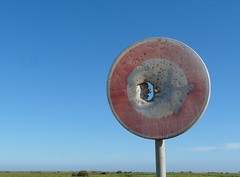Bibliography: Pseudo-random Number Generators
Introduction
-
The Art of Computer Programming: Seminumerical Algorithms
- The primary reference for the theory and practice of random number generation. In particular, the book contains a detailed discussion of the construction and testing of multiplicative linear congruential generators. Most of the papers listed here assume a familiarity with this book.
-
Numerical Recipes: The Art of Scientific Computing
- A collection of recipes and a facile introduction to the subject. Good for the absolute beginner.
Descriptions and Listings of Generators
-
Efficient and Portable Combined Random Number Generators
- Gives portable algorithms (written in Pascal) for combining two multiplicative linear congruential generators to obtain a generator with a long cycle. Each of the suggested generators passes a spectral test.
-
A Review of Pseudorandom Number Generators
- A brief review and Fortran code for three portable random number generators, one due to L'Ecuyer (ranecu) and two from Marsaglia et alia (ranmar, rcarry). The listing for rcarry contains an error fixed in a footnote in Luescher's article.
-
A Random Number Generator for PC's
- Description of a lagged Fibonacci subtract with carry algorithm for 80xxx based machines. Contains a good summary of the theory of such generators.
-
A Portable High-Quality Random Number Generator for Lattice
Field Theory Simulations
- Analysis of a subtract and carry lagged Fibonacci generator due to Marsaglia and Zaman (rcarry in the article by James) and a suggestion for improvement of its statistical quality. The method is portable.
Testing of Generators and Results
-
Hidden Errors in Simulations and the Quality of Pseudorandom
Numbers
- This paper contains extensive statistical tests of many common random number generators. It also includes timing tests on various machines.
Copyright: Sourendu Gupta; Last modified on 3 Nov, 2010.
